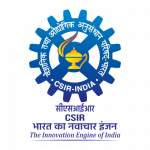
सीएसआईआर-राष्ट्रीय भौतिक प्रयोगशाला
CSIR-National Physical Laboratory

CSIR-NPL Charter
The National Physical Laboratory is one of the earliest national laboratories set up under the Council of Scientific & Industrial Research. Late Shri Jawaharlal Nehru laid the foundation stone of NPL on the 4th January 1947. Late Dr. K. S. Krishnan, FRS, was the first Director of the laboratory. The main building of the laboratory was formally opened by Late Deputy Prime Minister Sardar Vallabhbhai Patel on the 21st January 1950.The Silver Jubilee Celebration of the Laboratory were inaugurated by Late Prime Minister, Shrimati Indira Gandhi, on 23rd December 1975.
The main aim of the laboratory is to strengthen and advance physics-based research and development for the overall development of science and technology in the country. In particular its objectives are:
- To establish, maintain and improve continuously by research, for the benefit of the nation, National Standards of Measurements and to realize the Units based on International System (Under the subordinate Legislations of Weights and Measures Act 1956, reissued in 1988 under the 1976 Act).
- To identify and conduct after due consideration, research in areas of physics which are most appropriate to the needs of the nation and for advancement of field.
- To assist industries, national and other agencies in their developmental tasks by precision measurements, calibration, development of devices, processes, and other allied problems related to physics.
- To keep itself informed of and study critically the status of physics.
National Physical Laboratory has the responsibility of realizing the units of physical measurements based on the International System (SI units) under the subordinate legislations of weights & Measures Act 1956 (reissued in 1988 under the 1976 Act). NPL also has the statutory obligation to realize, establish, maintain, reproduce and update the national standards of measurement & calibration facilities for different parameters.
The laboratory is maintaining at present six out of seven SI base units. These are metre, kilogramme, second, kelvin, ampere, candela. R&D work is under way for realizing and establishing the seventh SI base unit of mole (mol). The SI supplementary units are radian (rad) & steradian (sr).
The derived units for physical measurement that the laboratory currently maintains are: force, pressure, vacuum, luminous flux, sound pressure, ultrasonic power & pressure and the units for electrical and electronic parameters viz., dc voltage; resistance; current and power; ac voltage; current and power; low frequency voltage; impedance and power; high frequency voltage; power; impedance; attenuation and noise; microwave power; frequency. impedance; and attenuation and noise.
The national standards of physical measurement at NPL are traceable to international standards. The laboratory periodically carries out inter-comparison of national standards with the corresponding standards maintained by National Metrology Institutes (NMIs) of other countries under the consultative committees of the International Committee of Weights and Measures (CIPM) and the member nations of Asia Pacific Metrology Programme (APMP) The major implication of this exercise of establishing equivalence of national standards on measurement at NPL with those of other NMIs is that calibration certificates issued by NPL would have global acceptability.
Over the years the laboratory has developed expertise in the subject enabling it to shift its basis for measurement standard from ‘artifact’ to quantum standards. Currently, the ‘second’ is realized through a bank of ceium clocks, meter is based on stabilized frequency of laser radiations, volt through A.C. Josephson effect, and ohm through Quantum Hall effect.
The laboratory provides apex level calibration services in the country; offering National Accreditation Board for Testing and Calibration Laboratories (NABL), the national accreditation body in the country (i) its qualified assessors as needed for establishing best measurement capability of the applicant laboratory; in particular its scientific, (ii) its technical input to enable NABL to decide the suitability of the applicant laboratory for accreditation, and (iii) its faculty to train testing laboratories for estimation of uncertainty in their measurements.
The laboratory is engaged in coordinating an inter laboratory programme on planning, preparation and dissemination of certified Indian reference materials also names as Bharatiya Nirdeshak Dravayas (BNDs). This is to ensure high quality measurement as well as the maintain the traceability of analytical measurements to national/international measurement system (SI unit) in order to fulfill the mandatory requirement of quality systems (ISO/IEC guide 17025) and of the National Accreditation Board for Testing and Calibration Laboratories.
All Rights Reserved - The Official Website of CSIR-National Physical Laboratory, CSIR, under Ministry of S & T, Govt. of India
Site Designed & Managed by Knowledge Resource Centre
CSIR-NPL, New Delhi
India